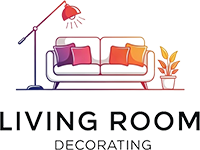Mismatched living room flooring, a situation that can feel less like a design choice and more like a design dilemma, doesn’t have to be a homeowner’s nightmare. In fact, embracing this “eclectic” flooring situation can lead to some truly unique and stylish living spaces. Whether you’ve inherited different flooring types from previous renovations, or you’re simply trying to work with what you have, there are a plethora of ways to create a cohesive and visually appealing living room despite the differing surfaces underfoot. This long read will give you some pointers.
Understanding the Mismatch: Types and Causes
First things first, it's important to analyze what exactly is causing the mismatch. Is it a difference in material? Perhaps you have hardwood flooring meeting tile? Or is it simply a difference in color or pattern? Different materials like wood, ceramic tile, luxury vinyl plank (LVP), and even concrete, each bring their own texture, tone, and maintenance requirements to the room. Knowing the material makeup informs which solutions are feasible.
Here's a quick rundown of common flooring types and their general characteristics:
- Hardwood Flooring: A classic choice, hardwood comes in a range of species (oak, maple, walnut), each with varying grains and colors. Often, homeowners might find themselves with different hardwood tones in adjacent rooms, creating a jarring effect.
- Tile Flooring: Tile offers durability and moisture resistance, making it ideal for high-traffic areas or homes in humid climates. The varieties are endless – ceramic, porcelain, slate, and even mosaic tiles can contribute to mismatching floors.
- Laminate Flooring: This budget-friendly option mimics the look of hardwood or tile, but it's made from composite wood pressed together. Often, the issue here is damage to a section, requiring replacement with a slightly different batch that's not 100% matching.
- Carpet: Soft and comfortable, carpet brings warmth to a room. However, different carpet styles or even variations in dye lots can create a mismatched flooring look when joining other materials.
The cause of your floor dilemma is also crucial. Did a previous owner remove a wall, exposing unfinished flooring beneath? Was there water damage to one section that required a patch job? Understanding the "why" behind the mismatch can help you determine the best course of action. For instance, water damage might indicate a bigger problem under the subfloor that needs to be addressed before worrying about the aesthetic.
Creative Solutions for Unifying Mismatched Flooring
Okay, lets explore some ways to bridge the gap and create a harmonious living room.
Rugs: The Ultimate Unifier
Rugs are perhaps the most versatile tool in your arsenal when it comes to dealing with mismatched flooring. A strategically placed rug can visually connect two different flooring types, creating a sense of unity and defining distinct zones within the living room.
- Area Rugs: Use a large area rug to cover a significant portion of one flooring type, allowing the other to peek out around the edges. Choose a rug with colors and patterns that complement both flooring styles.
- Runners: For connecting hallways or smaller transitions between rooms, runners can provide a seamless visual link.
- Layering Rugs: Don't be afraid to layer rugs! A smaller, patterned rug on top of a larger, neutral rug can add depth and interest to the space, while also softening the transition between flooring materials.
Consider the size, shape, color, and texture of your rugs carefully. A rug that's too small can make the room feel disjointed, while a rug that's too large can overwhelm the space. Color-wise, try pulling colors from both flooring types to create a cohesive palette.
Thresholds and Transitions: The Functional Fix
A well-chosen threshold or transition strip can make a world of difference in visually separating and connecting mismatched floors. These strips come in a variety of materials (wood, metal, vinyl) and styles, so you can choose one that complements your existing decor. They also serve to protect the edges of the flooring and prevent tripping hazards.
- T-Molding: Used when two different flooring types are at the same height.
- Reducer Strips: Used when one flooring type is slightly higher than the other.
- End Caps: Used to finish off the edge of a flooring type where it meets a wall or doorway.
Proper installation is key to ensuring a smooth and safe transition. It's often worth hiring a professional for this task, especially if you're dealing with uneven flooring heights.
Paint and Stain: A Simple Harmonizer
Sometimes, the simplest solutions are the most effective. If the mismatch is primarily due to color variation, consider painting or staining one of the flooring types to better match the other. This is particularly effective with hardwood flooring, which can be sanded and stained to achieve a desired hue.
- Color Matching: Bring a sample of your existing flooring to a paint store to get a perfectly matched stain or paint color.
- Creating a Contrast: If you prefer a more intentional look, you can also choose a contrasting color that complements both flooring types.
- Stenciling: For a more decorative touch, consider stenciling a pattern onto one of the flooring types.
Before you start painting or staining, be sure to properly prepare the surface by cleaning, sanding, and priming it. Always test a small, inconspicuous area first to ensure you're happy with the color and finish.
Furniture Arrangement: Strategic Placement
Clever furniture placement can also help to minimize the visual impact of mismatched flooring. By strategically positioning your furniture, you can create distinct zones and draw attention away from the flooring differences.
- Anchor Furniture: Place large pieces of furniture, such as sofas or entertainment centers, on the flooring type you want to emphasize.
- Divide the Space: Use furniture to create natural divisions between the different flooring areas. For example, a bookshelf can separate a carpeted living room area from a tiled dining area.
- Create a Focal Point: Choose a focal point in the room, such as a fireplace or a piece of art, to draw the eye upwards and away from the flooring.
Think about how people will move through the room and how the furniture arrangement will affect the overall flow. The aim is to create a space that feels balanced and intentional, despite the mismatched floors.
Decorative Borders: Define and Connect
A decorative border can be a stylish way to define the boundaries between different flooring types. This can be achieved with paint, tile, or even a contrasting strip of wood.
- Painted Borders: Use painter's tape to create a clean line and paint a border along the edge of one flooring type.
- Tile Borders: Install a row of decorative tiles to create a visual transition between two different flooring materials.
- Wood Borders: Use a contrasting strip of wood to create a border around a section of flooring, adding a touch of elegance and sophistication.
A decorative border can be a subtle yet effective way to tie the different flooring types together and create a more polished look.
The Power of a Unified Color Palette: A Room Level Approach
Beyond directly addressing the flooring itself, focusing on the overall color scheme of the room is crucial. This approach views the room as a single entity, where the floor is just one component of a bigger picture.
- Wall Color: Choose a wall color that complements both flooring types. Neutral colors are often a safe bet, but don't be afraid to experiment with bolder hues if you're feeling adventurous. The most common mistake is to paint the walls a color that will clash with the floor and make it seem more obvious that your floor is mismatched.
- Accessories: Use accessories, such as throw pillows, curtains, and artwork, to tie the room together. Pull colors from both flooring types to create a cohesive look.
- Lighting: Pay attention to the lighting in the room. Warm lighting can enhance the richness of wood tones, while cool lighting can brighten up tile or concrete.
By creating a harmonious color palette throughout the room, you can minimize the visual impact of the mismatched flooring and create a space that feels balanced and inviting.
Embracing the Eclectic: The Intentional Mismatch
Sometimes, the best approach is to embrace the mismatch and turn it into a design statement. This involves celebrating the differences between the flooring types and using them to create a unique and interesting space.
- Highlight the Contrast: Instead of trying to hide the mismatch, emphasize it by using contrasting colors and textures.
- Create a Feature: Turn the mismatched flooring into a focal point by adding a decorative element, such as a mosaic or a painted design.
- Tell a Story: Use the mismatched flooring to tell a story about the history of your home. This can be particularly effective if the mismatch is due to renovations or additions over time.
This approach requires confidence and a willingness to experiment, but it can result in a truly one-of-a-kind living room.
This style isn't for everyone, but it's increasingly popular. People in general seem to be increasingly comfortable with mixing and matching, as opposed to strict, perfect matching.
When to Call a Professional: Assessing the Situation
While many of these solutions can be implemented by homeowners, there are times when it's best to call in a professional. This is particularly true if you're dealing with structural issues, uneven flooring heights, or complex installations.
- Structural Issues: If you suspect there may be structural problems beneath the flooring, it's crucial to have a professional assess the situation.
- Uneven Flooring Heights: Correcting uneven flooring heights can be tricky and requires specialized tools and expertise.
- Complex Installations: Installing tile, hardwood, or decorative borders can be challenging, especially for beginners.
- DIY Disasters: If your DIY attempts have backfired, it's always best to call in a professional to fix the problem.
A professional flooring contractor can provide expert advice and ensure that the job is done correctly, saving you time, money, and frustration in the long run.
Cost Considerations: Budgeting for Your Flooring Fix
The cost of addressing mismatched flooring can vary widely depending on the solutions you choose. It's important to set a budget and research your options carefully before committing to any particular approach.
- DIY Solutions: DIY solutions, such as painting or staining, are generally the most affordable option.
- Rugs and Accessories: The cost of rugs and accessories can range from a few dollars to several thousand dollars, depending on the size, material, and quality.
- Professional Installation: Professional installation can be expensive, but it's often worth the investment if you're dealing with complex issues or want to ensure a high-quality result.
- Material Costs: Replacement or repair of flooring, can get costly.
Get several quotes from different contractors before making a decision. Be sure to factor in the cost of materials, labor, and any necessary permits.
Beyond Aesthetics: Practical Considerations
Beyond the visual aspects of mismatched flooring, there are also practical considerations to keep in mind.
- Durability: Choose flooring types that are appropriate for the level of traffic and wear and tear in your living room.
- Maintenance: Consider the maintenance requirements of each flooring type. Some materials, such as hardwood, require regular cleaning and polishing, while others, such as tile, are more low-maintenance.
- Safety: Ensure that the flooring is slip-resistant, especially in areas where there may be moisture.
- Comfort: Think about the comfort of the flooring underfoot. Carpet is soft and warm, while tile can be cold and hard.
By considering these practical factors, you can create a living room that is not only visually appealing but also functional and comfortable.
The Future of Flooring: Trends and Innovations
The flooring industry is constantly evolving, with new materials, technologies, and design trends emerging all the time. Keeping an eye on these developments can help you make informed decisions about your flooring choices.
- Sustainable Materials: There's a growing demand for sustainable flooring options, such as bamboo, cork, and recycled materials.
- Waterproof Flooring: Waterproof flooring, such as luxury vinyl plank (LVP), is becoming increasingly popular due to its durability and versatility.
- Heated Flooring: Heated flooring systems are a luxurious addition to any living room, providing warmth and comfort underfoot.
- Smart Flooring: Smart flooring technologies, such as sensors that track foot traffic and adjust lighting, are beginning to emerge.
By staying informed about the latest trends and innovations, you can create a living room that is both stylish and cutting-edge.
Mismatched Flooring: Final Thoughts and Tips
Dealing with mismatched flooring in your living room can be a challenge, but it's also an opportunity to get creative and create a space that is uniquely your own. By understanding the cause of the mismatch, exploring different solutions, and embracing the eclectic, you can turn this design dilemma into a design triumph.
Here are some final tips to keep in mind:
- Don't be afraid to experiment: Try different solutions and see what works best for your space.
- Take your time: Don't rush the process. It's better to take your time and do it right than to make a mistake that you'll regret later.
- Get inspired: Look for inspiration online, in magazines, or in model homes.
- Have fun: Decorating your living room should be an enjoyable experience. Embrace the challenge and let your creativity shine!
- Consider the long term: Will this floor be something you grow to hate? If so, now is the time to fix it!
Good luck, and happy decorating!
Last modified: June 14, 2025



